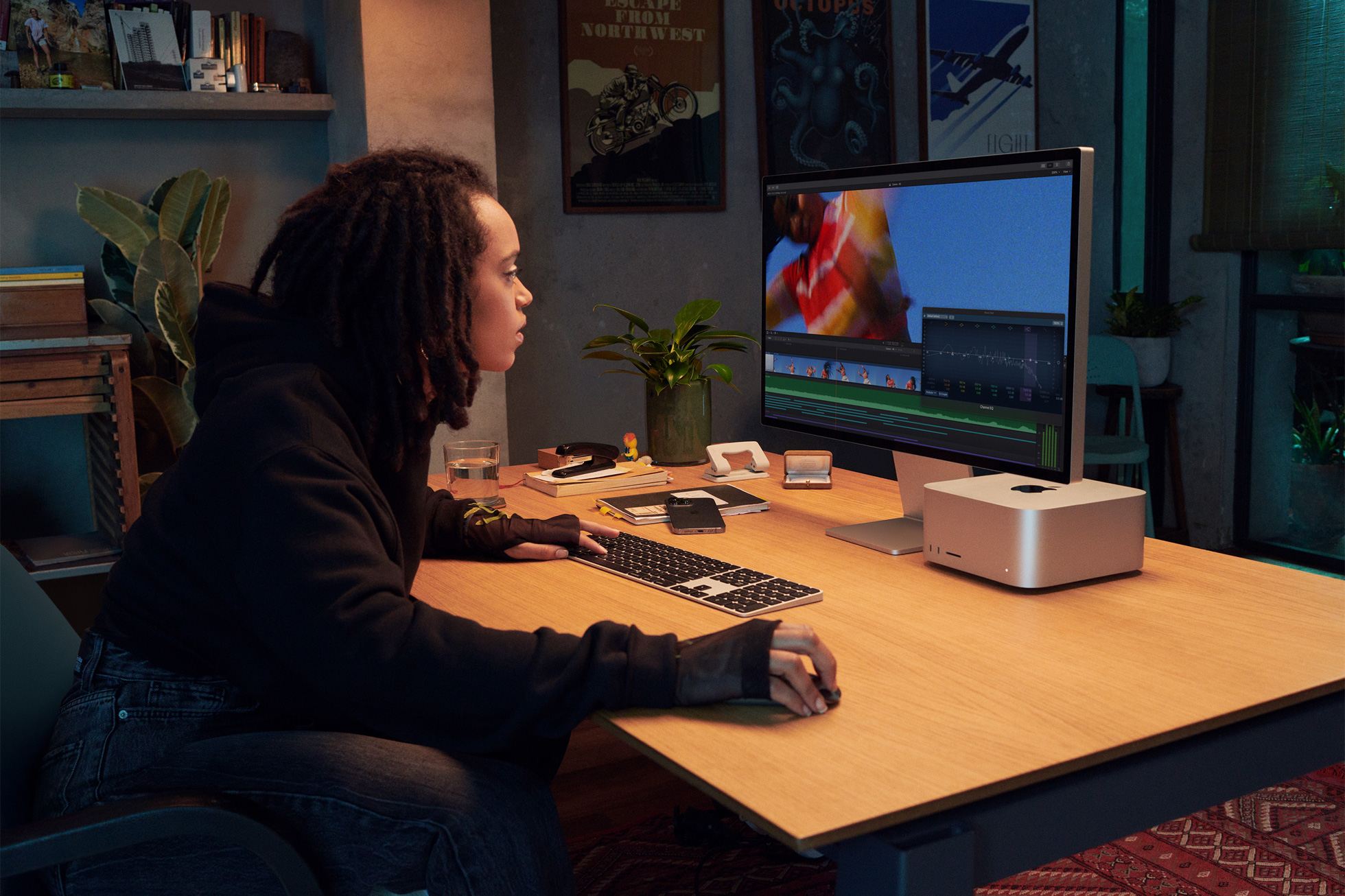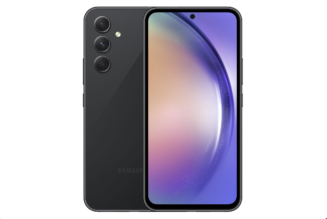
Source: Apple / Apple Mac Studio & Studio Display
With its new slate flagship devices, Apple is coming for all of the hard-earned coins you earned while working from home in these past two years.
The devil works hard, but Apple works harder to drop new products “more powerful and faster” than previously announced devices. Tuesday (Mar.8), the American-based tech giant had its first Apple Event of 2022 and came bearing gifts for Apple fanatics that will have them looking at the bank accounts, trying to figure out how in the hell they will pay for them.
During the event, Tim Cook and co spoke about all of the Academy Award nominations, its slate of AppleTV+ that many people still haven’t seen, a new green color for the iPhone 13, an updated iPad Air, plus a refreshed iPhone SE. Still, it was the Mac Studio that was the headliner.

Source: Apple / Apple iPhone 13
Essentially, the Mac Studio is the company’s upgraded desktop utilizing its new silicon chipset, the M1 Max chip, and a new, even more powerful processor, the M1 Ultra. The Mac Studio does bear a resemblance to the Mac Mini, but that’s where the comparison ends with the Mac Studio being “faster” than its top tier offering the Mac Pro.
Coming in at 3.7 inches tall, Apple boasts the Mac Studio “fits perfectly under most displays,” specifically its new Mac Studio Display, which we will touch on in a second. It will also remain quiet in the background even while handling heavy workloads like rendering videos.

Source: Apple / Apple Mac Studio
On the rear of the Mac Studio, there are four Thunderbolt 4 ports, plus a 10Gb Ethernet port, two USB-A ports, an HDMI, and an audio jack. There is also support for Wi-Fi 6 and Bluetooth 5.0.

Source: Apple / Apple Mac Studio
The front of the device has two USB-C ports. A deep dive breaks that down to 10 Gbps on M1 Max systems 40 Gbps/Thunderbolt 4 on M1 Ultra systems. Also included are an SD card slot and the option for support for up to four Pro Display XDRs and a 4K TV Apple announced.

Source: Apple / Apple Mac Studio
On the performance side, Apple states the Mac Studio will deliver 50 percent faster CPU than the Mac Pro that utilizes a 16-core Xeon and has 2.5 times faster CPU performance than the company’s 27-inch iMac with a 10-core Core i9. If you go for the Mac Studio featuring the M1 Ultra chip, you can expect 3.8 times faster CPU performance than the 27-inch iMac.
Those goodies packed on the inside allow it to work seamlessly with the new Studio Display, Apple’s latest external monitor. The Studio Display features a 27-inch 5K screen capable of achieving 600 knits of brightness and a 12-megapixel ultrawide camera. The Studio Display also comes with three USB-C ports and a Thunderbolt 4. Various stands give users different mounting options, and if you want, you can opt for nano-texture glass.

Source: Apple / Apple Studio Display
Here is the full rundown:
Mac Studio Powered By The M1 Chip:
- Up to 2.5x faster CPU performance than the fastest 27-inch iMac with 10-core processor.
- Up to 50 percent faster CPU performance than Mac Pro with a 16-core Xeon processor.
- Up to 3.4x faster graphics performance than the 27-inch iMac, and over 3x faster than Mac Pro with its most popular graphics card.
- Up to 7.5x faster than the 27-inch iMac, and up to 3.7x faster than 16-core Mac Pro when transcoding video.
Mac Studio Powered By The M1 Ultra Chip:
- Up to 3.8x faster CPU performance than the fastest 27-inch iMac with 10-core processor.
- Up to 90 percent faster CPU performance than Mac Pro with 16-core Xeon processor.
- Up to 60 percent faster CPU performance than 28-core Mac Pro.
- Up to 4.5x faster graphics performance than the 27-inch iMac, and up to 80 percent faster than the fastest Mac graphics card available today.
- Up to 12x faster than the 27-inch iMac, and up to 5.6x faster than 28-core Mac Pro when transcoding video.
As for the price, Apple greatness never comes cheap. The Studio Display will set you back $1,599. The M1 Max will start at $1,999, and the M1 Ultra models will start at $3,999. A fully decked-out Mac Studio with the M1 Ultra will cost you $7,999. We wished we were lying about that.
All products are available for pre-order starting today and will ship beginning March 18.
—
Photos: Apple











Tagged: Apple, entertainment blog, iPad Air, iPhone 13, iPhone SE, music blog, Newsletter, Tech